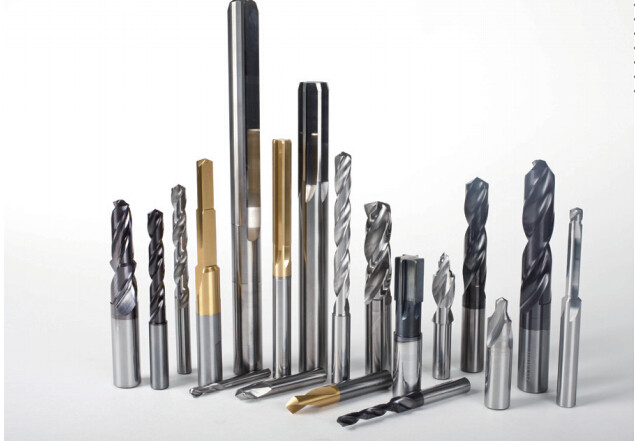The selection of cutting tools is one of the important contents in the CNC machining process, which not only affects the machining efficiency of the machine tool, but also directly affects the machining quality of the parts. CNC tools are one of the prerequisites for improving machining efficiency. Today, we mainly introduce the performance requirements and selection methods of CNC machining tools
Performance Requirements Of CNC Tools
Because CNC machine tools have the characteristics of high processing precision, high processing efficiency, concentrated processing procedures, and fewer parts clamping times, higher requirements are put forward for the CNC tools used. In terms of tool performance, CNC tools should be higher than those used by ordinary machine tools.
When choosing CNC tools, first of all, the standard tools should be the main ones, and if necessary, various high-efficiency composite tools and special special tools can be selected. When selecting standard CNC tools, various advanced tools should be selected as far as possible according to the actual situation, such as indexable tools, solid carbide tools, ceramic tools, etc.
When choosing CNC machine tools to process tools, the following aspects should also be considered:
1) The model, specification and accuracy grade of CNC tool
The model, specification and accuracy grade of the CNC tool should meet the processing requirements, and the tool material should be compatible with the workpiece material.
2) Good cutting performance.
In order to adapt to rough machining or difficult-to-machine workpieces, the tool can use a large back cut and high feed, and the tool should be able to withstand high-speed cutting and strong cutting performance. At the same time, the cutting performance and tool life of the same batch of tools must be stable in order to change the tool according to the tool life or manage the tool life through the CNC system.
3) High precision.
In order to meet the requirements of high-precision CNC machining and automatic tool change, the tool must have high precision, such as the radial dimensional accuracy of some solid end mills.
4) High reliability.
In order to ensure that the tool will not be accidentally damaged and potential defects in CNC machining, which will affect the smooth progress of the machining, it is required that the tools and accessories combined with it must have good reliability and strong adaptability.
5) High durability.
The tools used in CNC machining, whether roughing or finishing, have higher durability than those used in ordinary machine tool processing. Machining quality of CNC machine tools.
- Good chip breaking and chip removal performance.
In CNC machining, chip breaking and chip removal cannot be processed like ordinary machine tools, and they can be handled manually in time. The chips are easy to wrap around the tool and the workpiece, which will damage the tool, scratch the machined surface of the workpiece, and even cause injuries and equipment accidents, affecting the processing. quality and safe operation of the machine. Therefore, the tool is required to have good chip breaking and chip evacuation performance.

Tool Selection Method
Because the spindle speed and range of CNC machine tools are much higher than those of ordinary machine tools, and the output power of the spindle is large, compared with traditional machining methods, higher requirements are placed on CNC machining tools, including high precision, high strength, good rigidity, High durability, dimensional stability, easy installation and adjustment. This requires reasonable tool structure, standardization and serialization of geometric parameters. CNC tools are one of the prerequisites for improving machining efficiency, and their selection depends on the geometry of the part to be machined, the state of the material, the rigidity of the fixture and the tool selected by the machine tool. The following aspects should be considered:
1) Select the tool according to the cutting performance of the part and material.
For turning or milling high-strength steel, titanium alloy, and stainless steel parts, it is recommended to use indexable carbide tools with better wear resistance.
2) Select the tool according to the machining stage of the part.
That is to say, in the roughing stage, it is mainly to remove the allowance and choose a tool with better rigidity and lower precision, while in the semi-finishing and finishing stage, it is mainly to ensure the machining accuracy and product quality of the parts, and durable The tools with higher performance and higher precision, the tools used in the roughing stage have lower precision, and the tools used in the finishing stage have higher precision.
If the same tool is selected for roughing and finishing, it is recommended to select the tool that is removed from finishing during roughing, because most of the tool edges removed from finishing are slightly worn, and polishing is carried out through coating wear. Continued use will affect the finishing. Machining quality, but little effect on roughing.
3) Select the tool and geometric parameters according to the characteristics of the processing area.
If the structure of the part allows, a tool with a large diameter and a small aspect ratio should be selected; the end edge of the over-center milling cutter for cutting thin-walled and ultra-thin pendulum parts should have enough centripetal angle to reduce the cutting force of the tool and cutting parts. . When machining parts of soft materials such as aluminum and copper, an end mill with a slightly larger rake angle should be selected, and the number of teeth should not exceed 4 teeth.


